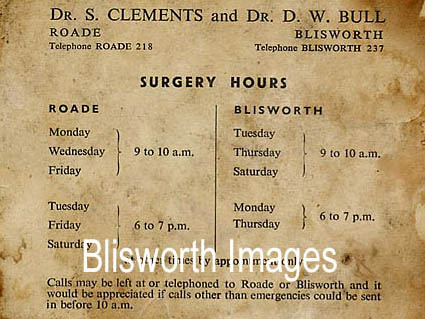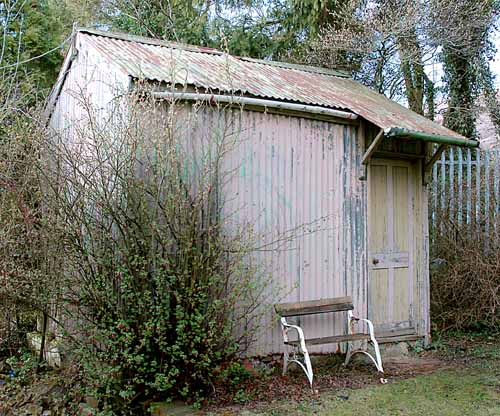|
A DOCTOR'S CONSULTING ROOM . . . This charming little chicken shed, shown below, is tucked behind the Grafton Villas beside the railway embankment. It has not been used for housing chickens very much since about 1930. It is plywood lined and has the carcass of a folding narrow bed, sans mattress. It measures about 3 metres by 2 metres. The story of this shed was retold in the Spring of 2006 by Dr Bull. Dr Jeaffreson, at his GP practice located at Grafton Villa, once used a brick outhouse to accommodate a waiting room, a consulting area and a small dispensary. At some point he evicted his chickens and converted this shed into a consulting room for reasons not disclosed. He installed an iron bedstead for patient examination. The austere waiting room remained in the brick outhouse along with the dispensary.
Doctor Bull however thought the facility and its location were pretty poor, even with the iron bedstead being replaced at some stage by a folding wooden contraption (see below). By 1964 had built a house in Little Lane with a consulting room and waiting room semi detached to it. Dr Clements junior, by then, had transferred his practice to Roade and the illustrated card shows that the parishes did not demand much in the way of 'surgery hours'. The custom in those days, of course, was for the doctors to make house calls. Indeed, conditions for patients could be dire. There is reported the death of an unknown man in the Northampton "Mercury": A man was declared dead at Blisworth Station on the 12 September 1879. People who knew him said he came from Roade and was known as "Darkie". He was poorly dressed and was unwashed. He was seen in Station Road outside Dr Knott's house (since 1841, a series of doctors have used the same house!) lying by the roadside. He said he was thinking of going to find his family in Liverpool so a passerby helped him to the station, sat him by the office door but noticed to his dismay that he had fallen over within five minutes. After he died it was established he had no money. Looking back over the intervening near 13 decades it seems obvious that either Dr. Knott had seen him, saw him as hopeless and penniless and suggested he gets to his family or, simply, the poor man desperately walked from Roade and called, too late in his illness, on a doctor who was out on his rounds. When Dr Bull moved the shed was left where it was, disused for 50 years, more or less in the state it was when the last patient left. Because of its history, the shed might one day be a feature of a much wanted Heritage Museum in the village. In November 2008 an application was made for the shed to be demolished and this reactivated people in the Blisworth Heritage Society to try and save the consulting room. |
|
|
 The practice later transferred to
The practice later transferred to

